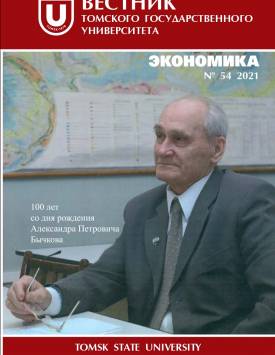A Model for Assessing the Public Effectiveness of Large-Scale Investment Projects: The Tree of Goals and Relative Importance Coefficients
The article proposes a methodology for assessing the public effectiveness of large-scale infrastructure projects. The implementation of large-scale projects affects the gross domestic product, the consumption fund, and making a decision to invest in a particular project is an extraordinary task. Projects of this scale involve a high degree of uncertainty and traditional methods are not acceptable as a tool for evaluating performance. The objects of comparative evaluation are railway projects: the Transpolar Mainline, the Lensk-Kamchatka Mainline and the railway crossing to Sakhalin Island. In the course of the research, the author applies both well-known methods of systems analysis (goal tree, expert assessments, relative importance coefficients, scenario approach) and methods of neo-system analysis (it is proposed to use a hybrid model of verbal and non-verbal assessment models). A tree of public efficiency goals for a large-scale project is constructed. To assess the achievement of the general goal, subgoals were formed: military-strategic, social and economic. The goal tree was considered in three scenarios: optimistic, intermediate, and pessimistic. In the course of the study, a questionnaire was developed and a survey of experts’ opinions was conducted. As a result of processing expert opinions, it was possible to obtain coefficients of relative importance (priorities) of each sub-goal in three different scenarios. At the next stage, the “alternative + scenario” sets were considered, within the framework of the constructed goal tree. This approach of processing the results of the goal tree allows taking into account the “scale” of the project since the analyzed projects have a significant impact on the entire economy, thereby influencing the scenarios themselves, in contrast to the widely used method of hierarchy analysis. As a result of the study, a methodology for evaluating large-scale projects using real experts was tested, which showed the priority of the railway crossing project to Sakhalin Island. When analyzing by the classical methods, the uncertainty of the external environment that affects the implementation of a particular scenario is taken into account, and this is sufficient in the framework of evaluating small-scale projects using the methods of system analysis. But the evaluation of large-scale projects using this method is incomplete, despite the systematic approach, since the implementation of such projects has an impact on the scenario itself, and this fact must be taken into account. It is concluded that it is necessary to use adequate methods of decision-making in relation to large-scale infrastructure projects, the need to use the methodology of non-system analysis, such an approach will allow taking into account the uncertainty of the external environment even more.
Keywords
large-scale projects, railway projects, infrastructure projects, transport projects, mega-projects, analytical hierarchy methodAuthors
| Name | Organization | |
| Pyataev Maksim V. | Siberian State Transport University | procedure@inbox.ru |
References

A Model for Assessing the Public Effectiveness of Large-Scale Investment Projects: The Tree of Goals and Relative Importance Coefficients | Vestnik Tomskogo gosudarstvennogo universiteta. Ekonomika – Tomsk State University Journal of Economics. 2021. № 54. DOI: 10.17223/19988648/53/5
